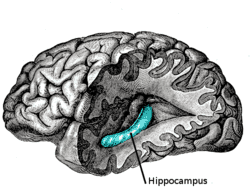Matthew Peterson on The Neural Basis of Learning

Learning happens at the neural level. Understanding how we’re wired equips curriculum developers to create effective learning experiences. We know enough about learning to be able to say that there is a clear path to get every student proficient in math. That was the message of Dr. Matthew Peterson founder of southern California nonprofit MIND Research Institute.
In his lunch keynote at a Long Beach blended learning symposium yesterday, Peterson described the science behind his own dyslexic difficulties—challenges that launched his lifelong search for the secrets of learning. A captivating speaker, Peterson crisscrosses a large ballroom presenting while manipulating animated schematics of brain activity on a very cool homegrown iPad app.
“There are thee types of learning,” Peterson claims. First is self-organized learning. Most school learning is of the second type, reinforcement learning, where rewards and consequences accompany accumulation of knowledge and skills. The most valuable lessons are derived from error-driven learning where questions are triggered when something unexpected happens.
The evolutionary reason for the brain is to “connect perception and action,” said Peterson, “The perception-action cycle is the basis for all learning.” The brain’s random access memory takes in a variety of inputs. A pattern recognizer in the hippocampal circuit looks for causality in the world and feeds a mismatch detector.
Powerful error-driven learning fires theta waves. Peterson believes these hippocampus activating activities occur while a child is exploring or building with Legos, but typically not while watching TV.
An activated theta wave may generate as many as seven bits of information in the brain’s short term working memory—just enough to hold multiple things in your head so that you can act on real world problems. Peterson claims that dyslexia reduces the number of items that short term memory can deal with creating signal overlaps that cross and block signals.
Dr Peterson suggests that educators should create learning environments that optimize theta waves—hypothesis-driven learning. This theta max strategy is built into the special temporal game-based approach that Matthew’s team has developed.
A trial and error approach is not only built into the games, it is inherent in the development process. Privately Peterson will tell you that he’s developed thousands of games and many don’t make the cut. But the nearly thousand games that make up the ST Math library have been proven very effective. The revolutionary ST Math software has proven to boost math proficiency for over 400,000 students and 14,000 teachers in 1,300 schools.
Most ST Math games focus on helping JiJi the penguin move from one side of the screen to the other. Peterson and MIND Research Institute just celebrated JiJi’s 15th birthday of maximizng theta waves in young brains.
In districts like Santa Ana, where there has been district-wide adoption with high levels of participation, ST Math helped double math proficiency. That level of success makes Peterson believe that “There is a clear path to get every student proficient in math and we’re going to make it happen!”
For more, see:
- Matthew Peterson’s TED talklink to other stories
- Peterson’s article in District Administrator on the Connection Between Math & Neuroscience
- Blending Math Games Gets Big Results in Big Trials
- Education Leaders Talk Blended Learning & STEM at Edtech Symposium
- Innovation & Execution: A Colorado Springs Case Study
- ST Math Demonstrates Positive Results at Las Vegas Elementary Schools
MIND Research Institute is a Getting Smart advocacy partner







Kevin
Thanks for taking the time to shed more light on the importance of making the connection between deep knowledge of brain functioning and the development of effective curriculum/instructional strategies in order that we may positively transform our schools.